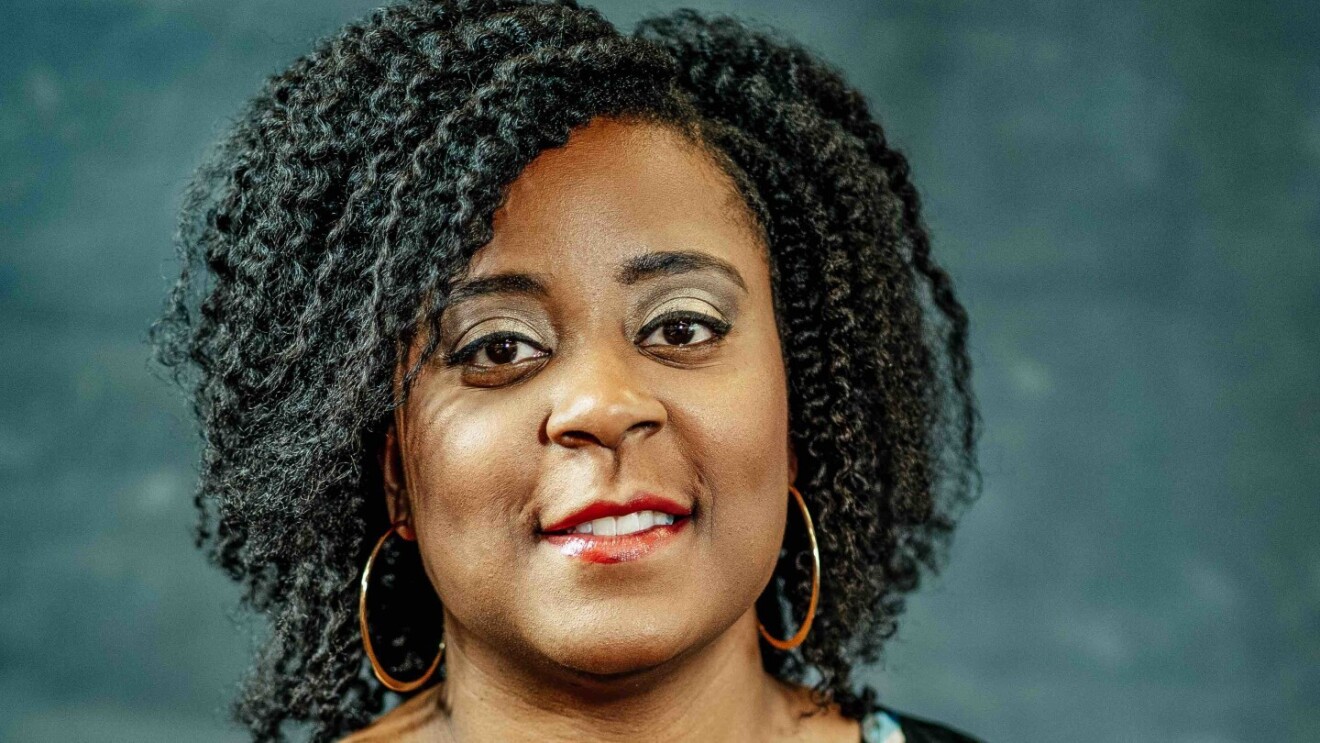Allie K. Miller works with some of the world’s most innovative Artificial Intelligence companies in her role at Amazon Web Services. Her career path and unique job helped her get involved in a new report that looks at the opportunities for women in AI and ways to close the industry’s gender gap.
“My job didn’t exist three years ago. It was nowhere in the world." said Miller, global head of machine learning and business development for startups and venture capital at AWS. “Today, there are infinite paths to get into AI and machine learning. It’s not this narrow little sidewalk you have to tiptoe. It’s a 14-lane highway.”
Miller was one of several women in AI leadership positions interviewed for Women in AI, a new report by AWS partner Deloitte and their AI Institute. The report examines the roots of the gender gap in the industry—as well as what can be done to fix it—and the opportunities available to women in the fast-growing field.
 Allie K. Miller, global head of machine learning and business development for startups and venture capital at AWS.
Allie K. Miller, global head of machine learning and business development for startups and venture capital at AWS.The report is based on in-depth interviews with 12 executives, all women, and a survey of 200 experts working in AI, a quarter of whom identified as male. AWS co-sponsored the Women in AI report. It includes a foreword from LaDavia Drane, who heads Global Inclusion, Diversity, and Equity at AWS, and Kavitha Prabhakar, chief officer of Diversity, Equity, and Inclusion at Deloitte.
In order to build an effective AI system, an AI team needs to be as diverse as the population the team’s AI will impact. Given that half the world’s population is female, having more gender diversity in AI is “common sense,” as Miller put it. Yet women only make up 26% of data and AI positions in the global workforce. Why?
One of the main barriers to women working in AI comes long before they enter the job market, according to the report. Social and cultural stereotypes, such as girls not being as capable as boys in math or science, often dissuade young women from pursuing study focused on STEM (science, technology, engineering, and math).
Many of the women Deloitte researchers interviewed said they wouldn’t have pursued a path to AI had they not had a direct influence to get into STEM, such as a mother who worked in science or an engineering camp in middle school. The women also emphasized the roles of mentors. “When I look back at my career, most of my successes can be traced back to a mentor,” Miller said. “The benefits of the mentor-mentee relationship cannot be overestimated.”
“The advice I would have given my younger self on my professional development is ‘don’t be afraid to ask for help,’” said Dr. Nashlie Sephus, applied science manager for AWS, another leader interviewed for the report.
 Dr. Nashlie Sephus, applied science manager for AWS.
Dr. Nashlie Sephus, applied science manager for AWS.The report emphasizes that although a strong mathematical or statistical background can be important in AI, it is not a prerequisite. And even though men outnumber women in the AI industry, men aren’t necessarily more advanced in their AI careers, according to the report. AI is still a nascent field where relatively few people have leading expertise, and many organizations and workforces are just beginning their AI journeys.
Among the report’s key recommendations:
Build and showcase archetypes of women working in AI
Researchers said it is vital to have women in visible roles as scientists or AI leaders within business and society. Those leaders provide other women working in AI with clear examples of how to advance professionally, and their visibility helps deconstruct stereotypes about women and girls not belonging in STEM fields.
Researchers said it is vital to have women in visible roles as scientists or AI leaders within business and society. Those leaders provide other women working in AI with clear examples of how to advance professionally, and their visibility helps deconstruct stereotypes about women and girls not belonging in STEM fields.
Provide education on AI
Organizations need to remove the ambiguity surrounding what it means to work in AI and showcase the numerous opportunities in the industry beyond engineering and tech roles. Businesses also must promote a culture of continuous learning and provide women interested in AI with professional development opportunities.
Organizations need to remove the ambiguity surrounding what it means to work in AI and showcase the numerous opportunities in the industry beyond engineering and tech roles. Businesses also must promote a culture of continuous learning and provide women interested in AI with professional development opportunities.
Mentor future women in AI
Many of the women interviewed for the report said mentorship was a key driver behind their success. They said informal relationships had as much, if not more, influence on their trajectory than formal programs.
Many of the women interviewed for the report said mentorship was a key driver behind their success. They said informal relationships had as much, if not more, influence on their trajectory than formal programs.
Create a culture of diversity and inclusion at all levels
The report found that organizational programs to address gender diversity are likely not enough on their own. Creating a culture of inclusion means constantly searching for and eliminating biases and discrimination against women in the workforce, while at the same time placing women into organizational opportunities where they have been historically underrepresented.
The report found that organizational programs to address gender diversity are likely not enough on their own. Creating a culture of inclusion means constantly searching for and eliminating biases and discrimination against women in the workforce, while at the same time placing women into organizational opportunities where they have been historically underrepresented.
“What struck me most about this research is that it clearly shows the way to increase representation of women in AI goes far beyond recruitment,” said Drane, who leads AWS’s global inclusion, diversity, and equity efforts.
“It starts with supporting early STEM education and showing young women and girls what AI roles are out there. It’s real, active mentorship that’s organic and from peers, and it’s ongoing training and development to build AI leaders that organizations can then champion.
“All of this resonates with me because it's clear we're on the right track at AWS with our focus and commitments,” Drane said. “But it's also clear we need to do more. We all do. And now we know the path to get there.”

Trending news and stories
- Everything you need to know about ‘Thursday Night Football’ on Prime Video
- ‘Thursday Night Football’ 2025 schedule: How to watch live on Prime Video
- How to watch ‘Oh. What. Fun.’ on Prime Video
- How Amazon Pharmacy has helped customers save more than $100 million on prescription medications like GLP-1s and insulin








